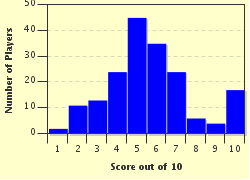Quiz Answer Key and Fun Facts
1. Ralph the Llama's first guest is the Bohemian waxwing, which is one of only a few bird species to be almost entirely frugivorous (fruit-eating). So, a bowl of berries it is! However, Ralph must make sure to pick perfectly ripe berries. Why is this?
2. It took Ralph a while to find red harvester ants for his next guest because the harvester ant population has been declining due to competition with non-native fire ants. For which denizen of the southwestern United States are harvester ants the primary source of food?
3. Ralph's next guest, a sulphur-crested cockatoo, announced on arrival that today was his weekly geophagy day. What unusual treat will Ralph need to locate for this guest?
4. Ralph restrains humiliation by avoiding leaving out jams, jellies, and gelatins for his next guest: an actual box jellyfish. What is Ralph most likely to leave on the table for this attending animal's meal?
5. Ralph has invited a mated pair of flamingoes to his feast, but they have insisted on bringing their youngster with them. They say the youngster will be no trouble because they will bring their own nourishment for it in the form of crop milk. Which fact is NOT true about crop milk?
6. Ralph had anticipated that some of his guests would behave like real animals at dinner so he decided to invite some well-behaved Japanese macaques to set an example. However, as soon as he served them with a dish of roast sweet potatoes the macaques picked the food off their plates and disappeared into the kitchen where they proceeded to do what with the food?
7. Ralph's next guest will eat just about anything that is put in front of him - he's a real pig! As well as his eating habits, this next guest's physical appearance raises a few eyebrows at the dinner table - his canine teeth are huge and erupt out of his skull. Which animal is Ralph serving?
8. Ralph finds he's gone from one extreme to another as his next guest is an extremely picky eater. What will he have to serve up in order to tempt a Westermann's snake into dining?
9. With this next guest, the giant coconut crab, it's all about coconuts. It eats coconuts, hunts them down from trees, uses the fibres as part of its bedding and, in its infancy, lives under them until the abdomen hardens. It also eats just about everything else and is even rumoured to have eaten Amelia Earhart's bones.
Which of the following food sources does NOT make up part of the giant coconut crab's diet?
10. Ralph is very careful to collect an ample amount pine seeds and needles, along with other weeds and grasses for his next dinner guest. The short tailed cricket can display an unpleasant habit that might put the other guests off their dinners. What is this unusual behaviour?
Source: Author
doublemm
This quiz was reviewed by FunTrivia editor
crisw before going online.
Any errors found in FunTrivia content are routinely corrected through our feedback system.

